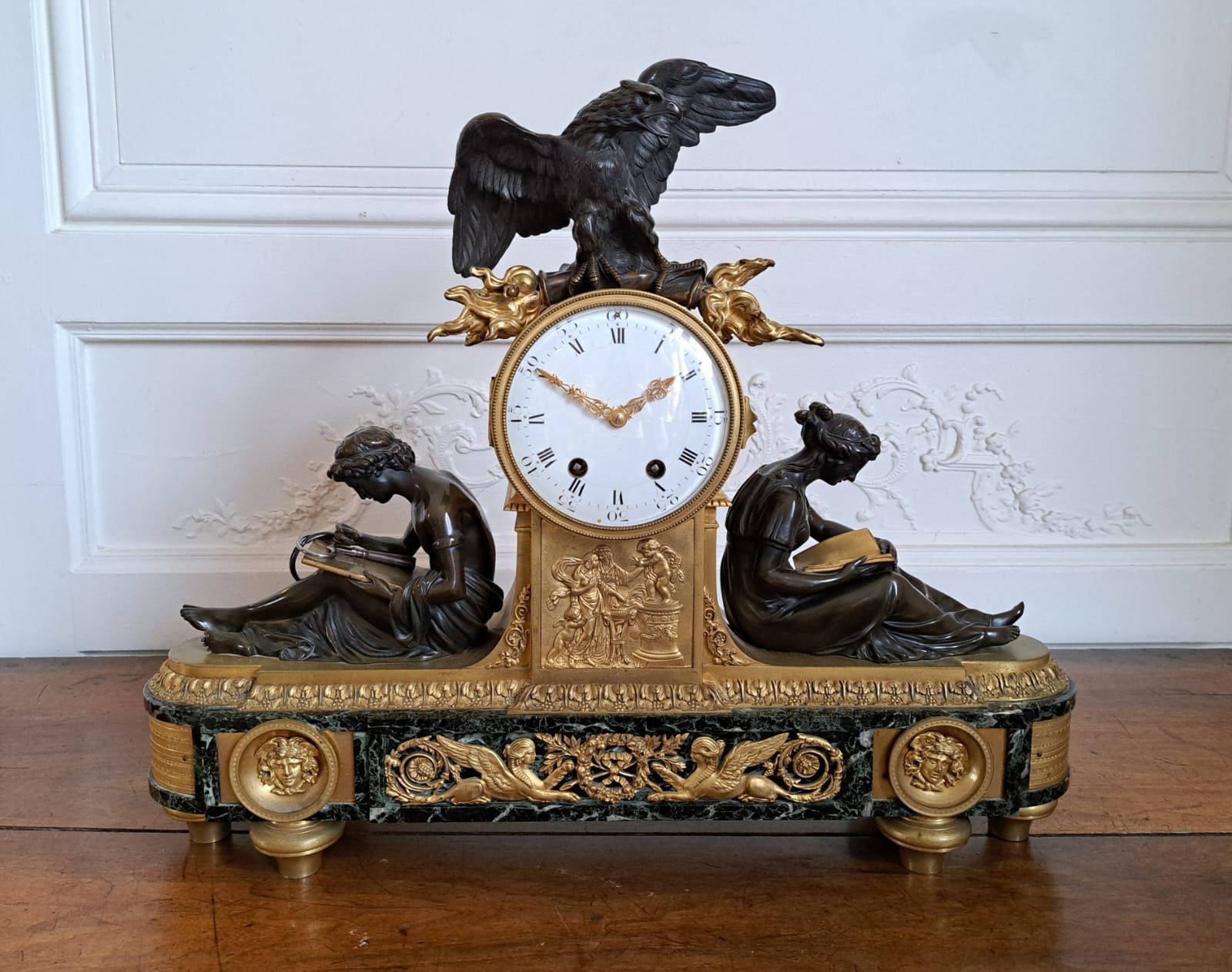Description
IMPORTANT HANGER known as "aux maréchaux" in gilded and chased bronze with double patina, resting on a sea-green marble base underlined by a frieze of leaves and bunches of grapes, adorned with masks of Mercury, sphinxes and leafy interlacing around a flowery wreath, supporting the allegory of Reading and Poetry between a plate symbolizing Love. Circular dial, indicating the hours in Roman numerals and the quarters in Arabic numerals. The shock absorber features an eagle with outstretched wings, holding inverted torches. 19th century. With key and balance wheel. H: 52.5 W: 60 D: 14 cm (slight wear) The design of this clock, sometimes called the "pendule à l'étude et à la philosophie" (study and philosophy clock), was very popular from the mid-1780s. It is directly inspired by a preparatory drawing attributed to the Parisian bronzemaker François Rémond illustrated in H. Ottomeyer and P. Pröschel, Vergoldete Bronzen, Band I, p.295, fig. 4.17.5. This model was probably executed by the bronzier under the direction of the most important marchand-mercier of the period, Dominique Daguerre. Bibliography: P. Verlet, Les bronzes dorés français du XVIIIe siècle, Paris 1987, p. 322. P. Kjellberg, Encyclopédie de la pendule française du Moyen Age au XXe siècle, 2005, p. 295.
104 .1
IMPORTANT HANGER known as "aux maréchaux" in gilded and chased bronze with double patina, resting on a sea-green marble base underlined by a frieze of leaves and bunches of grapes, adorned with masks of Mercury, sphinxes and leafy interlacing around a flowery wreath, supporting the allegory of Reading and Poetry between a plate symbolizing Love. Circular dial, indicating the hours in Roman numerals and the quarters in Arabic numerals. The shock absorber features an eagle with outstretched wings, holding inverted torches. 19th century. With key and balance wheel. H: 52.5 W: 60 D: 14 cm (slight wear) The design of this clock, sometimes called the "pendule à l'étude et à la philosophie" (study and philosophy clock), was very popular from the mid-1780s. It is directly inspired by a preparatory drawing attributed to the Parisian bronzemaker François Rémond illustrated in H. Ottomeyer and P. Pröschel, Vergoldete Bronzen, Band I, p.295, fig. 4.17.5. This model was probably executed by the bronzier under the direction of the most important marchand-mercier of the period, Dominique Daguerre. Bibliography: P. Verlet, Les bronzes dorés français du XVIIIe siècle, Paris 1987, p. 322. P. Kjellberg, Encyclopédie de la pendule française du Moyen Age au XXe siècle, 2005, p. 295.
